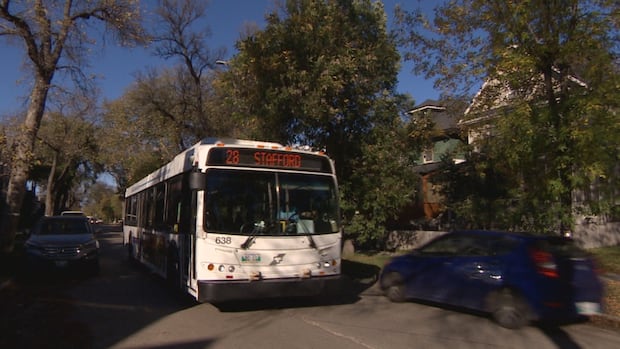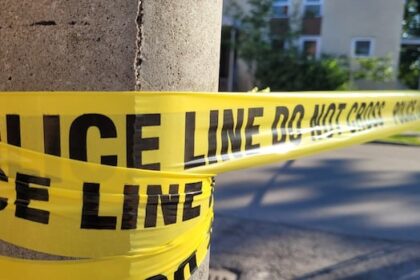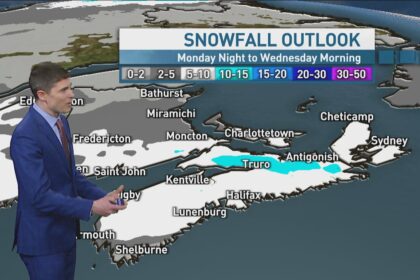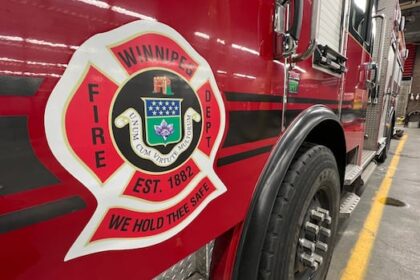ManitobaSome Wolseley residents are crying foul over recent changes to Winnipeg’s transit network, saying too many buses are now travelling down Arlington Street in their neighbourhood.Buses now rolling down street are shaking homes, causing safety concerns, residents sayDave Baxter · CBC News · Posted: Oct 08, 2025 6:00 AM EDT | Last Updated: 3 hours agoA Winnipeg Transit Route 28 bus drives down Arlington Street in the Wolseley neighbourhood on Tuesday. (Randall McKenzie/CBC)Some Wolseley residents are crying foul over recent changes to Winnipeg’s transit network, saying too many buses are now travelling down Arlington Street in their neighbourhood.”It’s loud and it’s disturbing, and there’s hairline cracks in some people’s homes already,” said Wolseley resident Rebecca Forgan. “So the planning was not the best, and the consultation process was minimal at best.”Winnipeg rolled out its new transit network in June, replacing its decades-old “hub-and-spoke” model, where buses meandered through outlying neighbourhoods before heading downtown, with a new “spine-and-feeder” system, under which buses follow a more grid-like pattern.That changed almost every bus route in the city, including sending Route 28 buses down Arlington Street in the Wolseley neighbourhood.Forgan, who has lived on Arlington for the last 15 years, was one of several delegates who spoke during a meeting of city council’s public works committee on Tuesday, decrying the number of buses now running down the street, between Portage and Wolseley avenues, following the changes.During a meeting last month, council’s city centre community committee recommended that the public service be directed to report back on the possibility of reducing the speed limit on Arlington, between Portage and Wolseley, from 50 km/h to 30 km/h.Rebecca Forgan is among the Wolseley residents who say they’re concerned about recent changes to Winnipeg’s transit network, which now includes bus traffic down Arlington Street. (Randall McKenzie/CBC)”There’s almost 100 buses every day other than Sunday, that start at about 5:30 in the morning and go till just after 11 p.m.,” Forgan said in an interview after Tuesday’s meeting. “They’re stacked right behind each other early in the morning, late at night, or in the middle of the day, and they’re going at a good clip, and it is rattling people’s homes.”The increase in bus traffic also has parents in the area concerned about the safety of their children, Forgan said. “We have small yards — all the kids play in the front, and there’s no fences typically,” she said. Forgan said some residents are also worried about the damage the increased traffic will do to the pavement on Arlington Street, saying that section was already “not in great shape” before the changes.”These streets were never designed for this,” she said. ‘Slow order’ in placeSince the Transit overhaul, the city has had a wave of feedback from riders, most of which has been negative. That’s already prompted some tweaks to service, but Winnipeg Transit has said it needs a full year to analyze travel patterns before making major changes.According to Forgan, city officials asked residents in the area to deal with the current increase in buses on the street for at least the next year.”We were asked to try it for a year, and they were going to make changes and tweaks, so we figured we’d try it out,” she said. “We didn’t really have a choice.”Bjorn Radstrom, Winnipeg Transit’s manager of service development, says the city has issued a ‘slow order,’ which asks bus operators in the area not to drive more than 30 km/h. (Randall McKenzie/CBC)With no changes to the routes expected anytime soon, Forgan said she and other area residents would like to see the city immediately drop the speed limit on the street to 30 km/h.”It’s not going to fix it, but it’s going to make it more tolerable,” she said. She and others are also hoping the city will eventually consider making changes that would see fewer buses using Arlington, instead travelling on nearby roads like Portage Avenue that she said can better handle heavy bus traffic.Bjorn Radstrom, Winnipeg Transit’s manager of service development, said after Tuesday’s meeting the city has issued a “slow order,” which asks bus operators in the area not to drive more than 30 km/h. However, the order is not law, he said.”Most of them do adhere to that, but we’ve got different drivers that sub in and drive the routes, so they don’t always get the message or they forget,” he said.”But really, with that slow order in place, they should be not going over 30 km/h.”Coun. Janice Lukes, who chairs the public works department, said after Tuesday’s meeting that the city won’t rush into any major changes to the new transit system in the immediate future, and warned it could take time even to get the speed limit reduced in the area.Coun. Janice Lukes says the city won’t rush into any major changes to the new transit system in the immediate future. (Randall McKenzie/CBC)”We don’t want to be doing one-offs,” Lukes said.”We want to look at the big picture and have our public works department come forward with a recommendation,” which would be required for a speed limit change, she said.Winnipeg Transit sending too many buses down Arlington Street, residents saySome residents of Winnipeg’s Wolseley neighbourhood say Winnipeg Transit’s network overhaul has resulted in too many buses travelling down Arlington Street. They say the influx in bus traffic is rattling homes, damaging roads and creating safety hazards for children playing nearby.ABOUT THE AUTHORDave Baxter is an award-winning reporter and editor currently working for CBC Manitoba. Born and raised in Winnipeg, he has also previously reported for the Winnipeg Sun and the Winnipeg Free Press, as well as several rural Manitoba publications.With files from Mike Arsenault
Wednesday, 8 Oct 2025
Canada – The Illusion
Search
Have an existing account?
Sign In
© 2022 Foxiz News Network. Ruby Design Company. All Rights Reserved.
You May also Like
- More News:
- history
- Standing Bear Network
- John Gonzalez
- ᐊᓂᓈᐯᐃᐧᐣ aninâpêwin — Truth
- Creation
- Beneath the Water
- Olympic gold medal
- Jim Thorpe
- type O blood
- the bringer of life
- Raven
- Wás’agi
- NoiseCat
- 'Sugarcane'
- ᐅᑳᐤ okâw — We remember
- ᑲᓂᐸᐏᐟ ᒪᐢᑿ
- This is what it means to be human.
- Nokoma
- Kanipawit Maskwa
- Native American names











